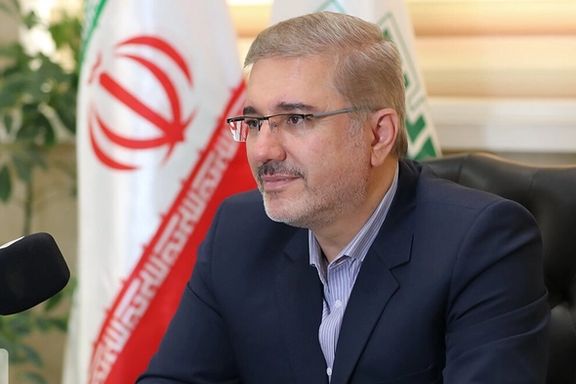Media In Tehran Raise Questions About Oil Exports And Revenues

Some media outlets in Iran are discussing apparent contradictions between estimated volume of oil exports and the income the government has secured.

Some media outlets in Iran are discussing apparent contradictions between estimated volume of oil exports and the income the government has secured.
Foreign sources monitoring Iran’s oil shipments estimated in August that daily exports reached close to two million barrels per day, after climbing to one million in 2022 and 1.5 million earlier this year. A Reuters survey published August 31 showed that OPEC’s oil output rose in August as Iranian supply jumped to its highest since 2018, despite ongoing cuts by Saudi Arabia and other members of the wider OPEC+ alliance to support the market.
However, the head of Iran’s Planning and Budget Organization, Davoud Manzoor, said in late August that only half of the government’s projected income form oil exports has materialized since the beginning of the current Iranian calendar year on March 22. He also claimed that the oil was sold at around $60 per barrel.
Given the fact that in this period the government was expecting to earn around $13 billion from oil exports, the Fararu website in Tehran argued that Manzoor’s statement means the government earned only $6.5 billion.

Apart from uncertainty about the real volume of Iran’s oil exports, another puzzle preoccupies the media. How much discount Iran provides to buyers of its oil. Perhaps that discount should explain why the government has earned only half of the expected oil revenues.
If an average daily 1.5 million barrels of oil was sold since March at $60 a barrel, the government should have earned $13.5 billion, EcoIran and Fararu websites point out. Therefore, either the volume of exports was lower, or the Islamic Republic offered deeper discounts amid US sanctions on its oil exports and banking transactions.
This leads to the belief that Iran is offering its oil at closer to $30 a barrel, while Russia, which is also under sanctions, sells its crude at around $60, and Tehran must compete with its ally to attract Chinese buyers.
The $30 price estimate comes from an average daily export of 1.5 million barrels, that industry sources have been reporting in recent months. At that price, Iran could earn $6.75 billion in five months since March, which is close to what Manzoor, the head of the Budget organization announced as government oil revenues in this period.
There is also the possibility that China pays more for the oil on paper, but actually remits much less in cash and the rest in barter. There are also middlemen who facilitate the illicit oil shipments and launder the payments for Iran amid banking sanctions. These activities could also take a big chunk out of the revenues.
Tankers carrying Iranian oil usually engage in ship-to-ship transfers in Asian waters to hide the origin of the shipments before it reaches China.
A substantial part of these hard currencies is sold at a subsidized rate to importers of essential goods, such as food and animal feed. While one US dollar fetches 500,000 rials on the open market, the government provides the hard currency at 285,000 rials for imports of food and medicine.
Since the United States exited the JCPOA nuclear accord and imposed the sanctions in 2018, Iran has been selling its oil in clandestine methods to China. Export volumes and prices are a state secret, and all figures are estimates by industry observers and occasional bits and pieces of information from government officials.